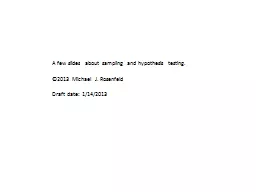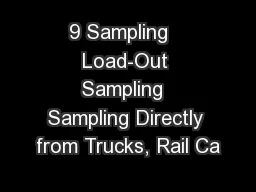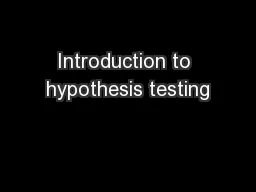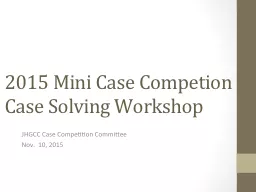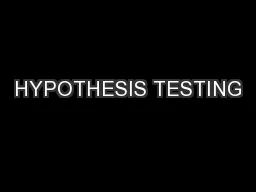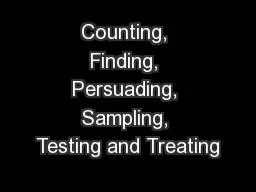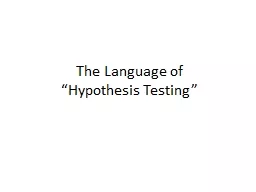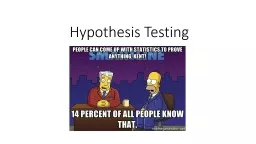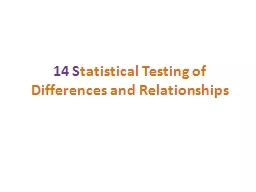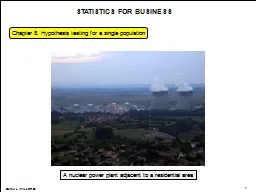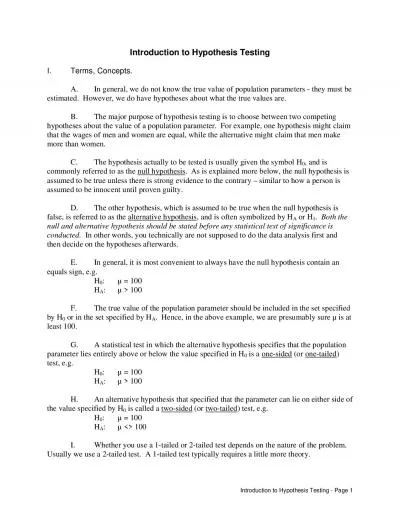PPT-A few slides about sampling and hypothesis testing.
Author : alexa-scheidler | Published Date : 2015-11-14
2013 Michael J Rosenfeld Draft date 1142013 The sample frame or sample universe is the data that our sample is drawn from In the case of the March 2000 CPS the sample
Presentation Embed Code
Download Presentation
Download Presentation The PPT/PDF document "A few slides about sampling and hypothes..." is the property of its rightful owner. Permission is granted to download and print the materials on this website for personal, non-commercial use only, and to display it on your personal computer provided you do not modify the materials and that you retain all copyright notices contained in the materials. By downloading content from our website, you accept the terms of this agreement.
A few slides about sampling and hypothesis testing.: Transcript
Download Rules Of Document
"A few slides about sampling and hypothesis testing."The content belongs to its owner. You may download and print it for personal use, without modification, and keep all copyright notices. By downloading, you agree to these terms.
Related Documents

